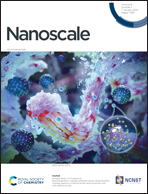Emerging biotransduction strategies on soft interfaces for biosensing
Abstract
As a lab-on-soft biochip providing accurate and timely biomarker information, wearable biosensors can satisfy the increasing demand for intelligent e-health services, active disease diagnosis/therapy, and huge bioinformation data. As biomolecules generally could not directly produce detectable signals, biotransducers that specifically convert biomolecules to electrical or optical signals are involved, which determines the pivotal sensing performance including 3S (sensitivity, selectivity, and stability), reversibility, etc. The soft interface poses new requirements for biotransducers, especially equipment-free, facile operation, mechanical tolerance, and high sensing performance. In this review, we discussed the emerging electrochemical and optical biotransduction strategies on wearables from the aspects of the transduction mechanism, amplification strategies, biomaterial selection, and device fabrication procedures. Challenges and perspectives regarding future biotransducers for monitoring trace amounts of biomolecules with high fidelity, sensitivity, and multifunctionality are also discussed. It is expected that through fusion with functional electronics, wearable biosensors can provide possibilities to further decentralize the healthcare system and even build biomolecule-based intelligent cyber-physical systems and new modalities of cyborgs.

- This article is part of the themed collections: Recent Review Articles, 2023 Nanoscale HOT Article Collection, Nanoscale 2023 Emerging Investigators and Celebrating International Women’s Day: Women in Nanoscience


 Please wait while we load your content...
Please wait while we load your content...